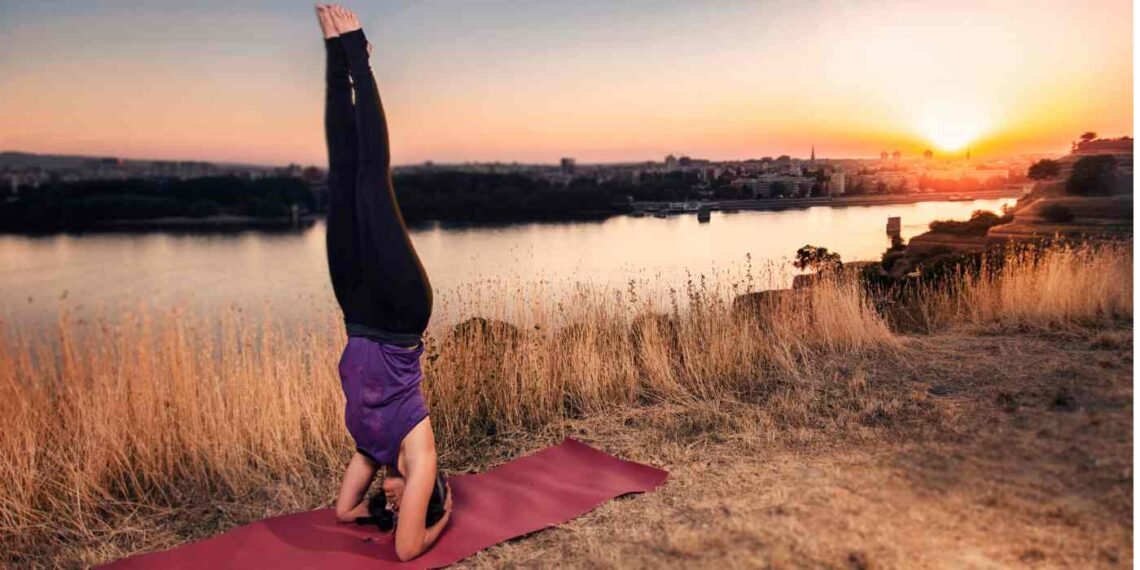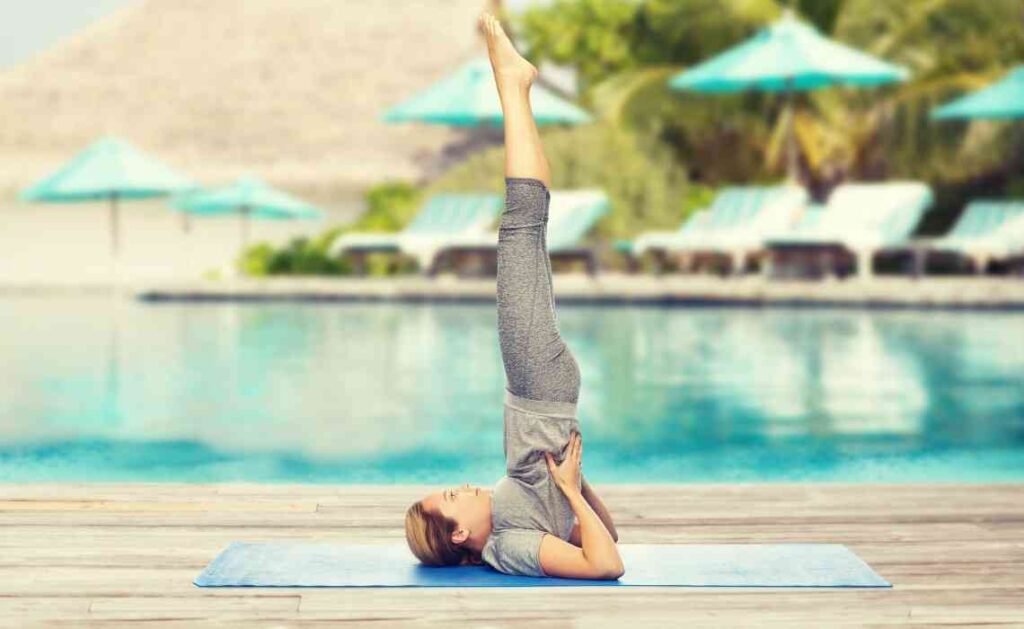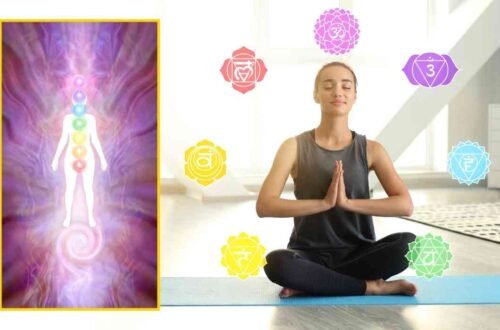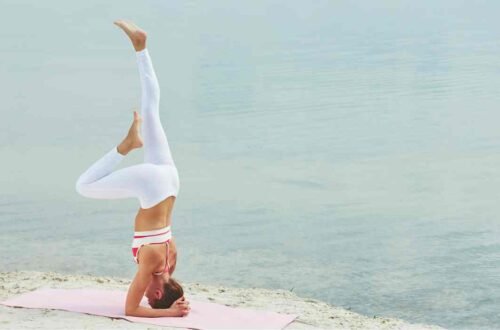
What is the Queen of All Yoga Poses in Practice? Explained for Beginners
Yoga is a beautiful way to move your body, calm your mind, and connect with your breath. People from all over the world practice yoga for different reasons — to feel healthier, to relax, or to become more flexible. But have you ever heard about the “queen” of all yoga poses? In the world of yoga, there is one pose that many teachers and practitioners call the queen because it has so many amazing benefits. Let’s explore what it is, why it is so important, and how you can practice it safely!
What is the Queen of All Yoga Poses?
The queen of all yoga poses is called Shoulderstand, or “Sarvangasana” in Sanskrit. In yoga, Sanskrit is the old language that names many poses. “Sarva” means “all,” and “Anga” means “body parts.” So Sarvangasana means “pose for all parts of the body.” That is a big clue about why this pose is so special.

Shoulderstand is a pose where you lift your legs and body up toward the sky while balancing on your shoulders. Your hands support your lower back, and your chin gently touches your chest. It looks like you are standing upside down!
Why is Shoulderstand Called the Queen?
Just like a queen takes care of her kingdom, the Shoulderstand takes care of your whole body. It touches and helps almost every part inside you. Here’s why:
- Improves Blood Circulation: In Shoulderstand, your body is upside down. This helps blood flow more easily back to your heart and brain. Better blood flow means more oxygen for your cells, which helps you feel fresh and energized.
- Helps Your Thyroid Gland: The thyroid gland sits at the front of your neck. It controls how fast or slow your body works. Shoulderstand gently presses this area, helping it work better. A healthy thyroid can make you feel active and happy.
- Calms Your Mind: When you practice Shoulderstand, your breathing slows down, and your nervous system relaxes. You start to feel peaceful, just like when you hear a lullaby.
- Strengthens Your Core and Shoulders: Holding yourself up needs strong muscles. Shoulderstand strengthens your belly muscles, shoulders, and arms. It builds power without needing any fancy gym machines.
- Supports Digestion: Being upside down helps your stomach and intestines move better. It can ease problems like constipation and make digestion smoother.
How to Do Shoulderstand Safely
It is very important to do Shoulderstand correctly to keep your neck and back safe. Here are the simple steps:
- Start by Lying on Your Back: Find a soft mat and lie down flat. Keep your legs together and arms by your sides.
- Lift Your Legs Up: Slowly raise both legs toward the sky. You can bend your knees a little if needed.
- Lift Your Hips: Push your hips up by pressing your hands into the floor. Then place your hands on your lower back for support.
- Straighten Your Body: Try to make a straight line from your shoulders to your feet. Your chin should gently touch your chest.
- Breathe Slowly: Stay in the pose for a few breaths. Make sure you feel comfortable, not strained.
- Come Down Gently: Slowly lower your hips back to the mat. Rest for a few moments before sitting up.
Tip: You can put a folded blanket under your shoulders to protect your neck. Always listen to your body. If anything hurts, stop right away.
Who Should Be Careful with Shoulderstand?
While Shoulderstand is wonderful, it is not for everyone. If you have neck pain, high blood pressure, or eye problems like glaucoma, you should skip this pose. It is always a good idea to ask a yoga teacher or a doctor before trying new poses, especially if you have health issues.
Benefits of Practicing the Queen of Yoga Poses Regularly
Practicing Shoulderstand often can make you feel amazing. Here are some long-term benefits:
- Better Sleep: Since it relaxes the nervous system, Shoulderstand can help you fall asleep faster and sleep more deeply.
- Happier Mood: The improved blood flow to your brain can make you feel cheerful and reduce feelings of sadness or stress.
- Stronger Immune System: Good blood circulation and relaxation can boost your body’s ability to fight off sickness.
- Flexible Neck and Shoulders: Regular practice can make your neck and shoulders less stiff and more flexible.
- Boosts Confidence: Being able to balance upside down makes you feel brave and strong. It reminds you that you can achieve difficult things with practice.
Fun Facts About Shoulderstand
- In ancient yoga books, Shoulderstand is called a “cure for all diseases.”
- Some people call Shoulderstand “Mother of Poses” because it nurtures the body.
- Famous yoga teachers often say, “If you do no other pose, do Shoulderstand!”
How to Make Shoulderstand Easier for Beginners
If you find Shoulderstand hard at first, don’t worry. There are ways to make it easier:
- Use the Wall: Lie down with your legs up against a wall. This way you can get used to the feeling without lifting your hips.
- Use Props: Place pillows or folded blankets under your back to give you extra lift and support.
- Practice Leg Lifts: Before trying full Shoulderstand, practice lifting just your legs while keeping your back on the mat. This builds strength over time.
What Happens Inside Your Body During Shoulderstand?
Shoulderstand is like a magic switch inside your body. Here’s what happens:
- Blood rushes back to your heart, giving your heart a little rest.
- Your brain gets more oxygen, which sharpens your thinking.
- Your lymphatic system, which cleans waste from your body, works better.
- The calming part of your nervous system — called the parasympathetic system — wakes up and makes you feel super relaxed.
Tips to Keep in Mind
- Always Warm Up: Before trying Shoulderstand, do gentle warm-up poses like Cat-Cow, Bridge Pose, and gentle neck stretches.
- Stay Focused: Keep your mind calm and breathe slowly while holding the pose.
- Consistency is Key: Doing Shoulderstand a few times a week is better than doing it perfectly just once. Small, steady practice brings big rewards.
Other Poses Related to Shoulderstand
Shoulderstand often comes with other poses in a sequence. Here are a few:
- Plow Pose (Halasana): After Shoulderstand, you can gently lower your feet behind your head to stretch your back more.
- Fish Pose (Matsyasana): This is usually done after Shoulderstand to balance the neck stretch. You lie on your back, lift your chest, and tilt your head backward.
- Bridge Pose (Setu Bandhasana): A great pose to build strength before learning Shoulderstand.
The Shoulderstand truly deserves its title as the “queen of all yoga poses in practice.” It helps almost every part of your body, calms your mind, and teaches you patience and balance. Like any royal title, it comes with responsibility — the responsibility to practice safely and with respect for your body.
If you are new to yoga, take your time. Practice the easier steps first and always listen to how your body feels. With regular practice, you too can enjoy the wonderful gifts of the queen of all yoga poses.





